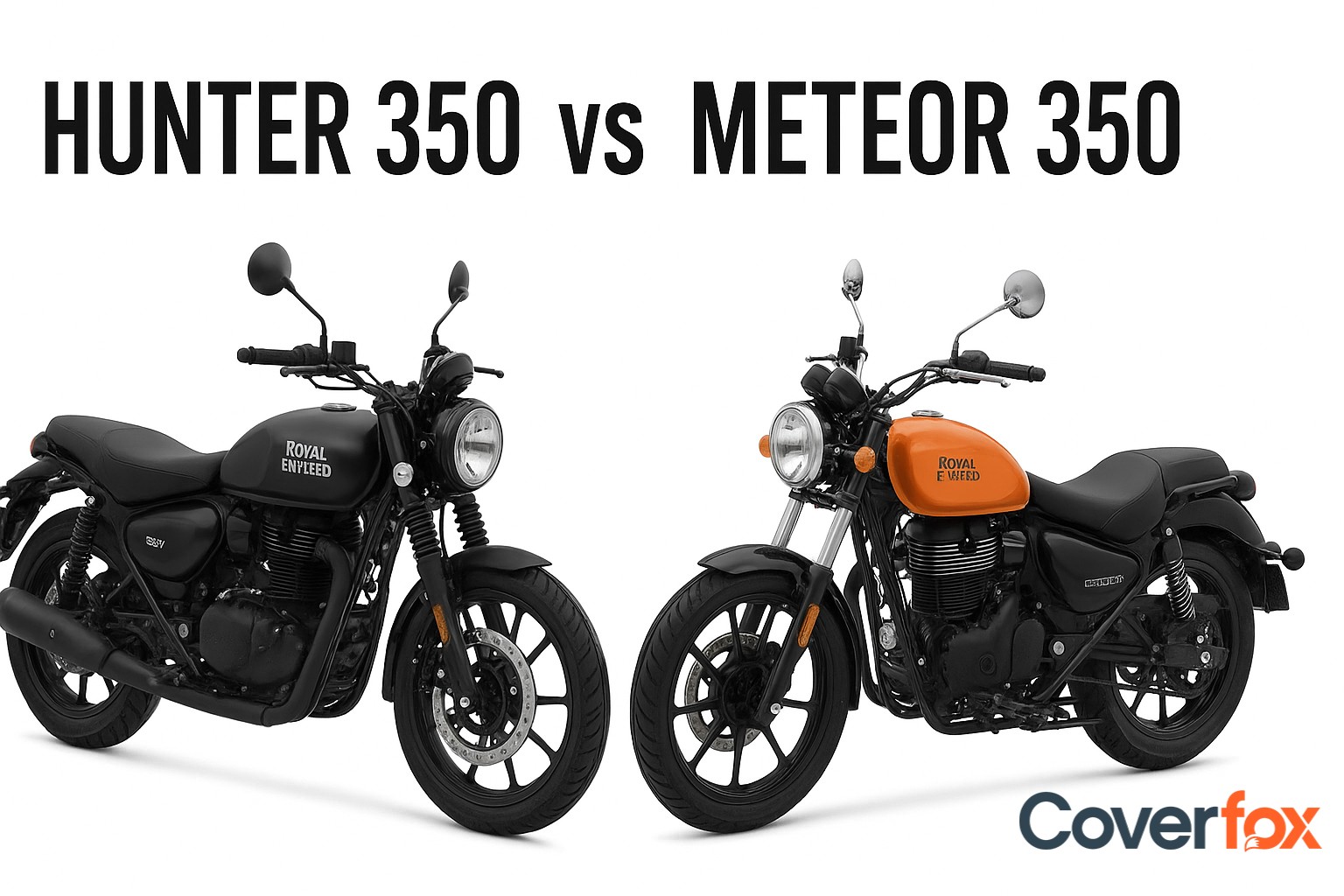For most Indian two-wheeler riders, their bikes are their treasured possession. They take care of their bikes to ensure it's always in prestigious condition.

Why do they do it? To ensure optimum performance and ensure their motorcycle’s longevity. One of the main maintenance procedures is changing the bike’s engine oil. Some may say it is as important as having bike insurance. So, what exactly is the optimum way to change engine oil in a motorcycle, why changing bike engine oil regularly will benefit you and your bike and when should you change it? To get the answer to these questions, stick till the end.
Signs that Indicate Bike Engine Oil Change is Needed
Changing the bike's engine oil is an important maintenance procedure. Failing to do so will lead to overall poor bike performance, engine making loud noises and getting overheated. It also affects the mileage of the motorcycle and in severe cases, even engine breakdown is possible. So, lets understand the clear tells that the bike gives out if it needs an engine oil change:
Dashboard Indicator
In most modern bikes, if an engine oil is required, it is indicated on the dashboard of the bike. Some bikes may not directly indicate engine oil is faulty, but they may show something is wrong with the engine (A red blinking light is generally the indicator for engine faultiness). Check for engine oil leaks and replace the old one with a new, fresh oil to make your engine healthy again.
Engine Oil Leaks
Check the oil levels in your motorcycle’s engine, using a dipstick or an oil window. If you see that the oil levels are not at the recommended levels by your manufacturer, that means there is an oil leakage problem. First, fix the leakage, then replace the oil.
Engine Is Making Loud Noises
One of the clear indicators of bad engine oil is when the engine starts making noise. Engine oil helps reduce the stress and friction in the engine, acting as a lubricant. If your engine starts giving out weird and loud noises, it is due time to get your engine oil replaced.
Engine Oil Is Thick Or Black In Colour
As engine oil gets used up, the colour of the oil changes its shade, getting darker and darker. It also gets thicker or grittier. Use a dipstick to check the oil and rub the oil between your fingers to understand the consistency of the oil. If it's darker in shade or grittier than usual, it's an indicator of engine oil change.
Essential Tools and Preparations For Changing Bike Engine Oil
If you are planning to change engine oil by yourself at home, you will need to prepare for it before making the change. You will require certain essential tools, proper type of oil and a workable environment.
Here are the essential tools you will require
Wrenches or Socket Set
To remove the drain bolt and access the oil filter
Oil Drain Pan
To collect used oil without spills
Rubber or Nitrile Gloves
To protect your hands from hot oil and dirt
Funnel
For pouring new oil cleanly into the engine
New Engine Oil
As per your bike’s specifications
New Oil Filter
Recommended to replace every oil change
Cleaning Rags or Paper Towels
For wiping up drips or cleaning parts
Bike Stand or Centre Stand
To keep your bike upright and stable during the process.
Choosing the Right Engine Oil
Viscosity Grade
Check your bike manual for the correct viscosity, e.g., 10W-30 or 20W-50
Type
Choose between mineral, semi-synthetic, or fully synthetic oil based on your usage. Synthetic oils offer better performance and longer intervals
Manufacturer Recommendations
Always go with oil brands and grades approved by your bike’s manufacturer for optimal results.
Safety Tips Before You Start
- Ensure the bike is cool enough to touch, and not hot. Never work on an overheated engine
- Work in a well-ventilated area, to ensure you do not inhale any fumes
- Keep oil disposal ready, do not just dump into the sink
- Double-check that your bike is securely propped up using a double-stand before draining the oil.
Step-by-Step Process to Change Bike Engine Oil
Let us start on the main topic, how to change the bike’s engine oil properly. Here is a step-by-step procedure to ensure safe and optimum bike engine oil change.
Warm up the engine
Start the bike and let it idle for about two to three minutes. Slightly warm oil drains faster and carries more impurities. Do not let the engine overheat, as hot oil can be dangerous.
Locate the drain plug and oil filter
Consult your manufacturer’s manual to find the oil drain plug and filter. These are usually located at the bottom of the engine casing. Make sure the bike is on a level surface, preferably on the centre stand.
Drain the old oil safely
Place a drain pan underneath the plug. Use the correct wrench to loosen the drain bolt and allow the oil to flow out completely. Be careful as the oil may still be warm.
Remove and replace the oil filter
Once the oil is drained, use a filter wrench or your hand to remove the old filter. Apply a small amount of fresh oil to the gasket of the new filter before installing it. Tighten the new filter firmly by hand.
Reinstall the drain plug
Clean the drain bolt and replace the washer if needed. Reinstall the plug securely, ensuring it is tight enough to prevent leaks but not overtightened.
Pour in the new engine oil
Using a funnel, slowly pour in the recommended quantity and type of engine oil for your bike. Most bikes require between 800 millilitres to 1.2 litres. Refer to the bike’s manual for the exact specification.
Check oil levels and leaks
After filling the oil, wait a few minutes and then check the level using the dipstick or sight glass. Start the engine and let it run briefly. Turn it off and inspect for any leaks around the filter and drain plug.
Dispose of old oil responsibly
Used engine oil is hazardous and should never be poured down the drain or discarded in the open. Store it in a sealed container and take it to an authorised recycling facility or service station that accepts used oil.
Post-Oil Change Checklist
- Engine runs smoothly without strange noises
- No oil leaks from the drain plug or oil filter
- Oil level is within the recommended range
- Old oil and filter have been disposed of correctly
- All tools and work area have been cleaned and stored properly
Common Mistakes to Avoid While Changing Bike Engine Oil
If you are changing the engine oil for the first time, make sure you do not fall for these common mistakes as it can be dangerous:
Overfilling or underfilling
Always fill the new engine oil up to the recommended range given by your bike’s manufacturer. Overfilling can lead to leaks, excess pressure in the engine and can potentially damage the seal. Underfilling leads to insufficient lubrication, causing overheating of the engine.
Using the wrong oil type
Not every engine oil is the same. They differ from each other by viscosity, quality, formula and type. If you use car engine oil instead of bike engine oil, your bike will suffer the damage. Always refer to your bike’s manual and choose an oil that meets the specified grade and type.
Skipping oil filter replacement
The oil filter traps contaminants and metal particles. Reusing an old, clogged filter with fresh oil defeats the purpose of the oil change. It can cause impurities to enter into the engine, causing engine damage, wear and tear and even engine breakdown. Replacing the oil filter is as important as replacing the engine oil.
Ignoring safety precautions
Performing an oil change without taking basic safety steps can lead to burns, slips, or environmental hazards. Always let the engine cool slightly, use gloves, keep your bike stable on a stand, and ensure proper disposal of used oil.
How Often Should You Change Your Bike’s Engine Oil?
You should change your bike’s engine oil regularly at proper intervals. But, how often is it regular? Well, it depends on the type of engine oil used, manufacturer’s recommendation, use of the bike, age of the bike, etc. Generally, depending on the oil type this is recommended:
- Mineral oil should be changed every 2,000 to 3,000 kilometres
- Semi-synthetic oil every 5,000 to 6,000 kilometres
- Fully synthetic oil can last up to 7,000 to 10,000 kilometres
If you are using the bike on a regular basis, and travel through traffic a lot, you might require to change the oil more frequently due to wear and tear. Also, always refer to the manufacturer’s manual as it will showcase all the recommended servicing measures.
Benefits of Regular Bike Engine Oil Changes
Regular bike engine oil change is an important servicing procedure that ensures smooth running of your bike. Here are the key benefits of replacing the engine oil of your bike:
Improved Engine Performance
Clean oil reduces friction, allowing the engine to run smoothly and respond better.
Longer Engine Life
Fresh oil protects internal components from wear and tear, extending the engine’s lifespan.
Better Fuel Efficiency
A well-lubricated engine works more efficiently, helping you get more kilometres per litre.
Reduced Engine Wear
Regular oil changes prevent metal particles and sludge from damaging engine parts.
Improved Cooling
Engine oil helps absorb and dissipate heat, keeping the engine at optimal temperature.
Cleaner Engine
Fresh oil flushes out dirt, carbon deposits, and debris, reducing the risk of blockages.
Lower Maintenance Costs
Preventing damage through regular oil changes can save you from costly engine repairs.
Key Takeaways
Servicing your bike at regular intervals makes sure your bike sustains longer, and provides the best optimum performance. Changing oil is an easy DIY task, but you must do it carefully with keeping in mind all the safety precautions to avoid any future problems. While bike insurance does not cover for engine oil, having engine protection cover makes sure you get compensated if your engine gets damaged. Take care of your bike because while riding on the road, your life also depends on it.
Explore More
Frequently Asked Questions
Can I change my bike's engine oil at home?
Yes, you can with precautionary steps.
How often should I change bike engine oil?
Every 6 months, or 2000km, depending on the engine oil type.
Can I use car engine oil for my bike?
No, you should not use car engine oil for your bike.
How much does it cost to change bike oil at a service centre?
It can range from ₹500-₹1500, it depends on the service centre, type of engine oil used and quality of work.
Can I change the oil without changing the filter?
You can, but you should always keep a habit of changing the filter with the engine oil to ensure your work does not go to waste because of a faulty filter.
What type of oil should I use for my bike?
Check your bike’s manufacturer manual to understand which type of oil works best for your bike.
Can I reuse the old oil filter?
No, you should not reuse old oil filters.





